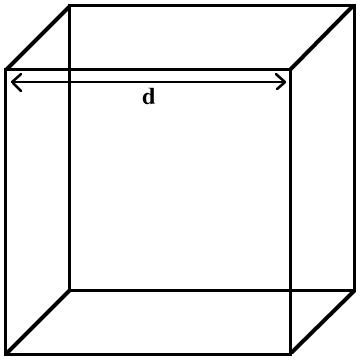Ball in a Box
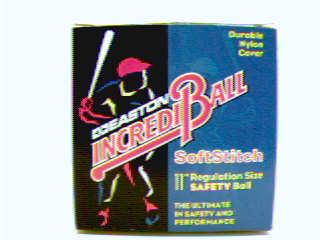 Introduction Baseballs and other spherical objects are often packed in boxes that are cubes. What percentage of the volume of a cubic box does a sphere that just fits in the box take up? The answer may surprise you! Activity Part I: An Experiment [top] 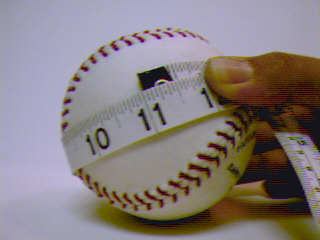 
If you have a spherical object that just fits in a cubic box, you can do a nice experiment to determine the percentage of the volume of the box that the sphere takes up. In our experiment, we used a number of IncrediBalls, which are packed in cubic boxes. The balls are 11 inches in circumference, and the box has an edge length of 3.5 inches. (On a 4-operation calculator, [11] [/] [3.5] [=] gives 3.1428571, which is a reasonable estimate of 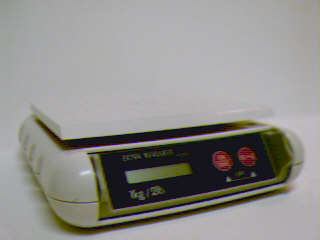 It is best to have
enough boxes, balls, and scales so that groups of three or four can perform
the experiment. We used "Extra Measures" digital scales, which measure in
grams and ounces. The scales have an "ON/TARE" button, so that
you can set them to zero after an object has been put on the scale. Measuring
tapes and rulers (for measuring circumference and the edge length of the
box) are optional. It is best to have
enough boxes, balls, and scales so that groups of three or four can perform
the experiment. We used "Extra Measures" digital scales, which measure in
grams and ounces. The scales have an "ON/TARE" button, so that
you can set them to zero after an object has been put on the scale. Measuring
tapes and rulers (for measuring circumference and the edge length of the
box) are optional. a. Estimating Have students estimate how much of the volume of the cubic box is taken up by the ball, which almost exactly fits in the box. Write down the guesses. (When we did this, guesses ranged from 2/3 to 4/5.) 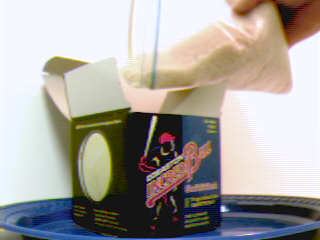 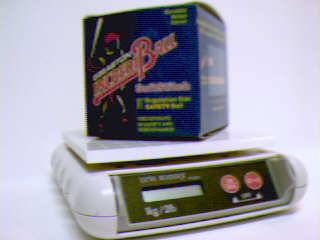 b. The weight of rice needed to fill the box.
b. The weight of rice needed to fill the box.Fill a cubic box with rice, and then weigh the rice. If you are using digital scales with a "TARE" button, you may place the empty box on the scales and press "TARE", then fill the box with rice. The weight that registers is the weight of the rice only. Our rice weighed 550 grams. Write down the weight; call it X.  c. The weight
of rice needed to fill the space around the ball when the ball is in the
box. c. The weight
of rice needed to fill the space around the ball when the ball is in the
box.Empty the box. Using the scales with a tare button, put the ball in the box, and put the box on the scales. Press the "TARE" button, and your scale will read zero. Now fill the space around the ball with rice. How much does the rice around the ball weigh? Our rice weighed 271 grams. Write it down; call it Y. Divide Y by X; with a calculator, call this number Z. (Our computation was [271] [/] [550] [%], which gave Z = 49.272727, which we can round to 49%.) You will find that the rice around the ball weighs approximately fifty percent of the rice in the entire box. d. The percentage of the volume of the box taken up by the ball. Since the weight of rice is proportional to its volume, the rice takes up only about fifty percent of the volume in the box (Z above), so the ball takes up the remaining volume, about fifty percent (100 - Z). Part II: Mathematical Solution [top] Consider the volumes of a sphere and a cube:
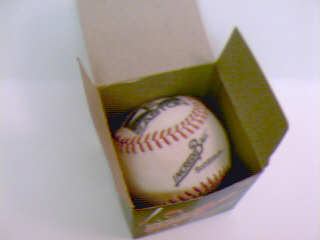 Since the edge length
(d) of the box is the same as the diameter of
the sphere, d is twice as long as the radius
of the sphere: Since the edge length
(d) of the box is the same as the diameter of
the sphere, d is twice as long as the radius
of the sphere:
Substituting d/2 for r in the formula for the volume of a sphere, we have:
Since
A sphere that just fits into a cubic box takes up only about 50% of the volume of the box (actually, just slightly more than half, since (1/6) |

